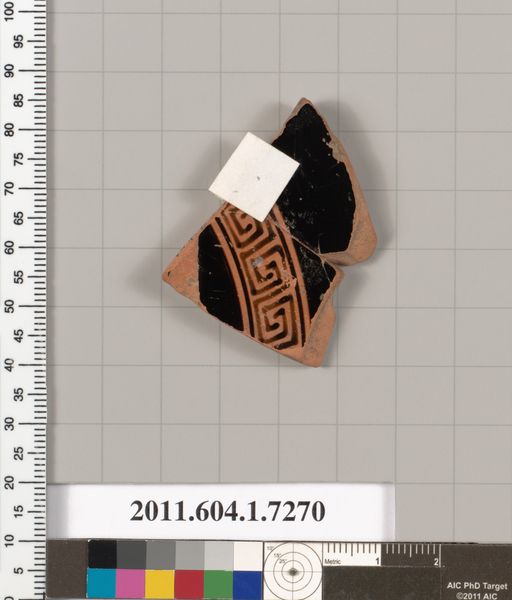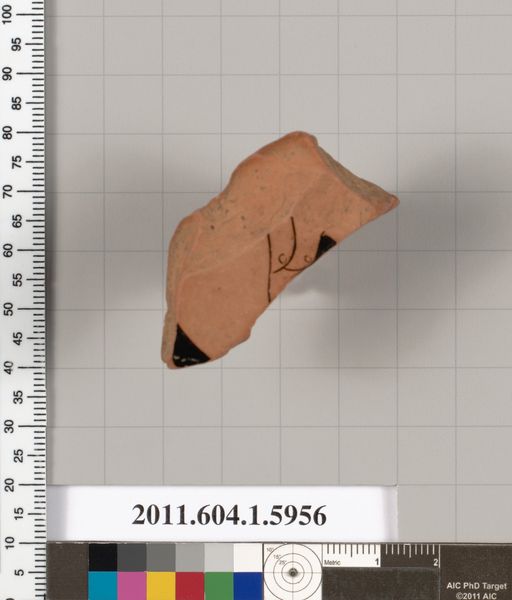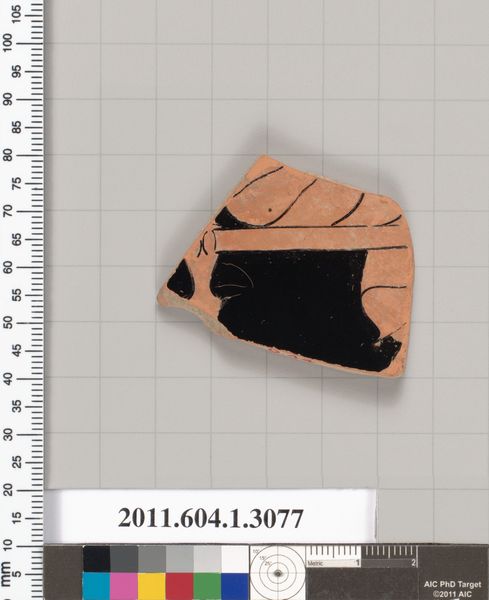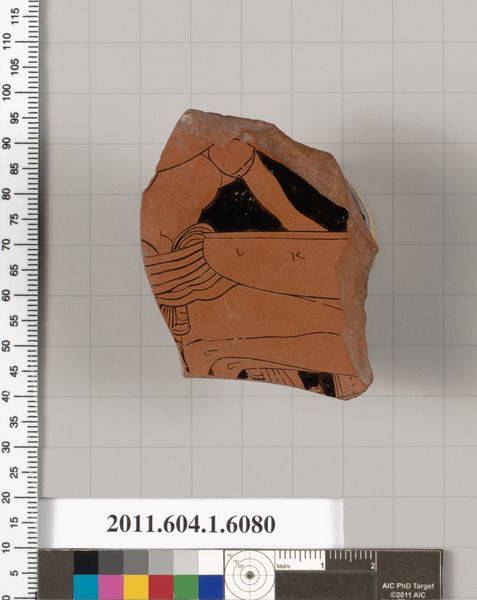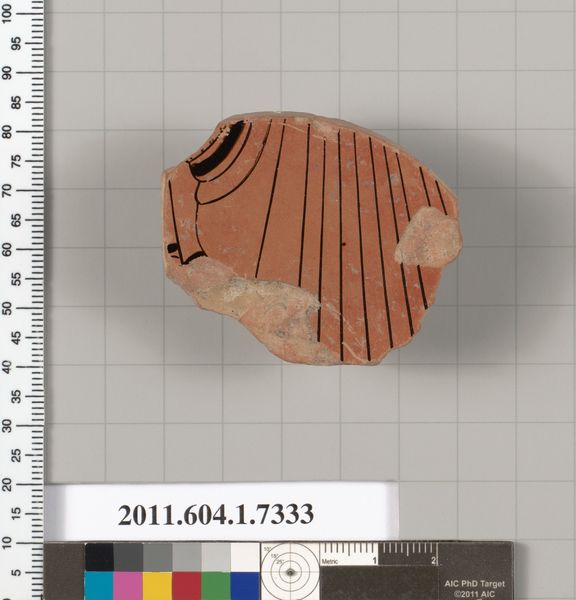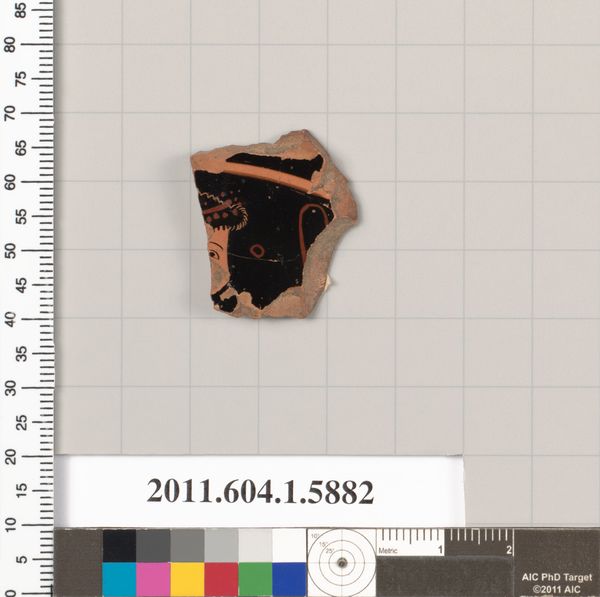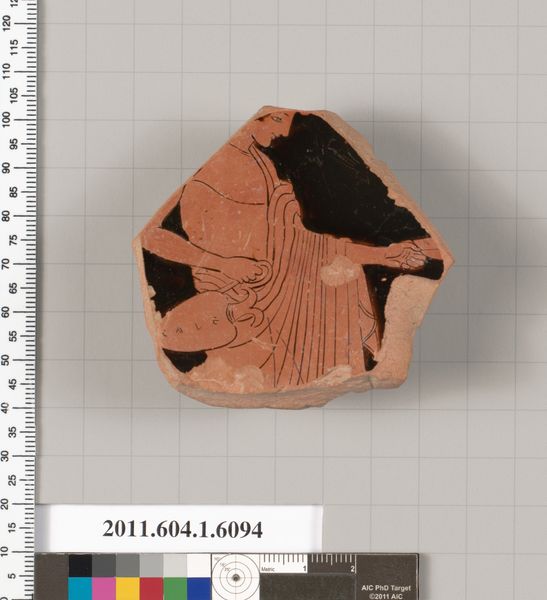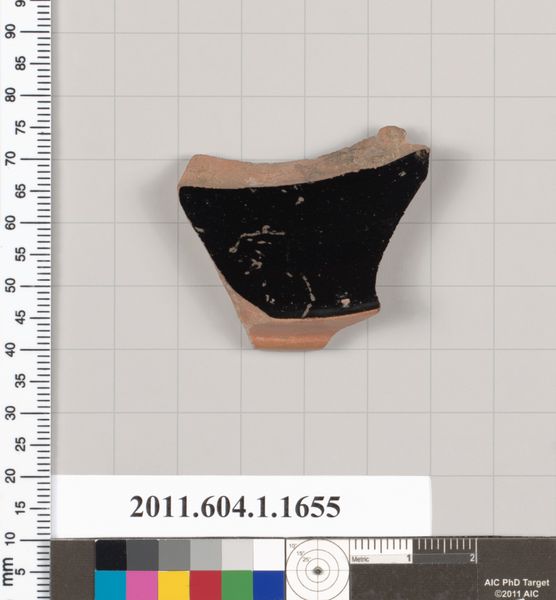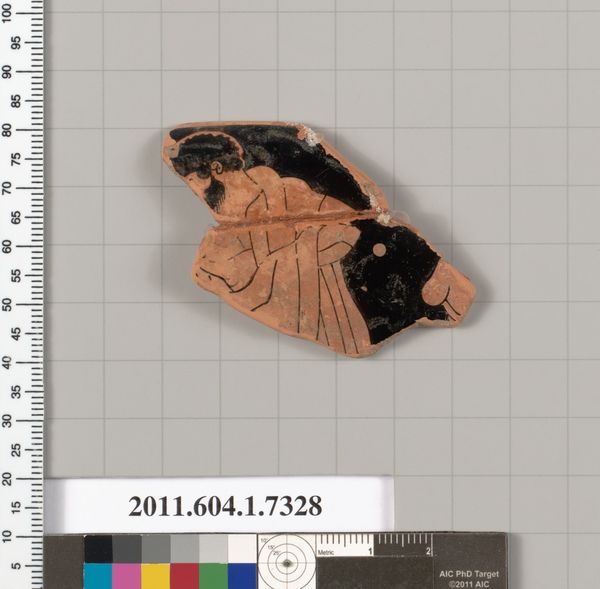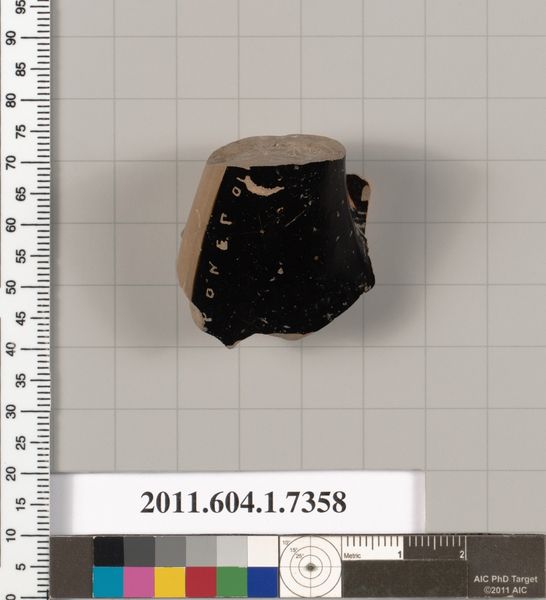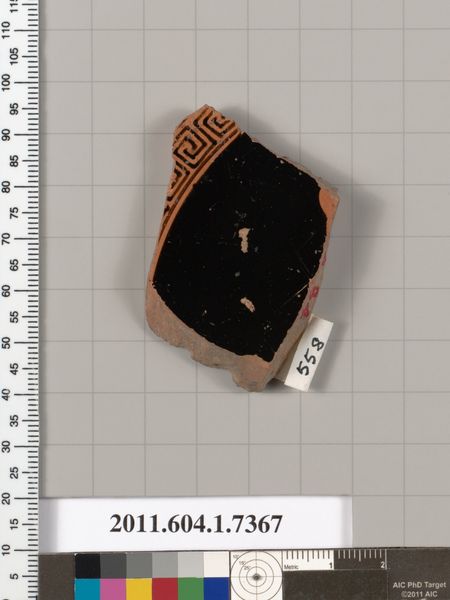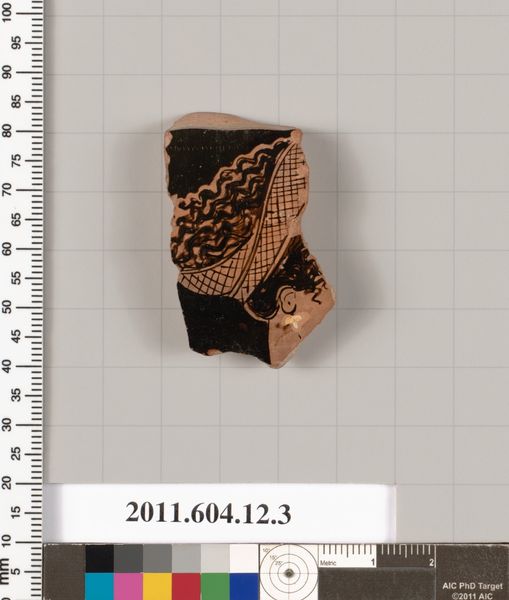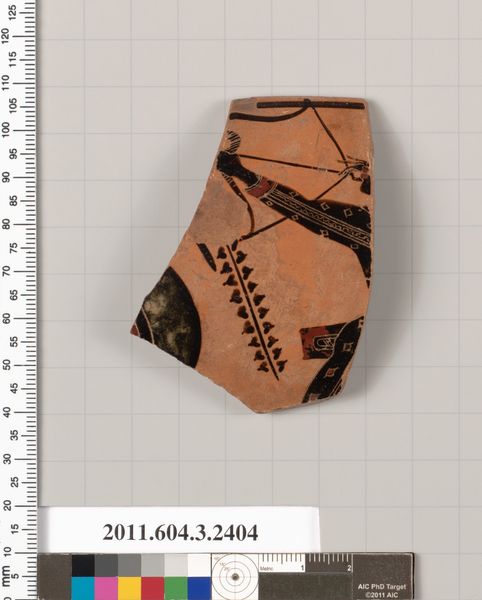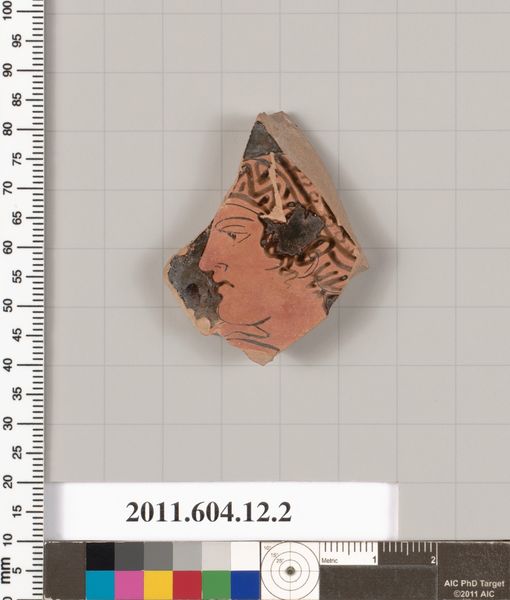
drawing, ceramic
#
drawing
#
greek-and-roman-art
#
traditional media
#
ceramic
#
vase
#
figuration
#
roman-art
#
ancient-mediterranean
#
line
Copyright: Public Domain
Editor: Here we have a fragment of a terracotta kylix, a drinking cup, dating back to 530 BC. It’s attributed to the artist Makron. Just a sliver remains, but even on this small piece, the scene is striking—there’s a sense of quiet intimacy in the hands delicately holding something. What story do you think this fragment tells us? Curator: It’s interesting that you see intimacy there. From a historical perspective, objects like this kylix fragment offer valuable insights into ancient Greek social rituals, particularly those associated with symposia, or drinking parties. Consider, who was producing these images and for whom? Editor: Good point, how would it function as a socio-political item? Curator: This wasn't just functional pottery. The decoration on kylixes often depicted scenes from mythology, daily life, or athletic competitions, and these scenes were carefully chosen to reinforce specific social values. It can be seen that the images weren’t neutral. The act of sharing drinks and viewing these scenes fostered a sense of community among the participants. What messages might these scenes, displayed at gatherings, convey? What role did they play in shaping social and political norms? Editor: That’s fascinating. So the imagery on this drinking cup was actively participating in shaping cultural understandings. It makes you think about the politics of imagery even today. Curator: Precisely. And this fragment reminds us that museums are only ever showing a broken glimpse. Understanding their full purpose requires a deep interrogation into social functions that this small remnant alludes to. Editor: So true, looking at art from this lens gives them more power. I will try to remember the cultural function the next time!
Comments
No comments
Be the first to comment and join the conversation on the ultimate creative platform.
